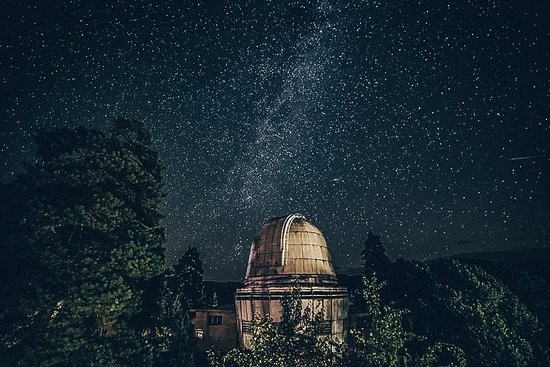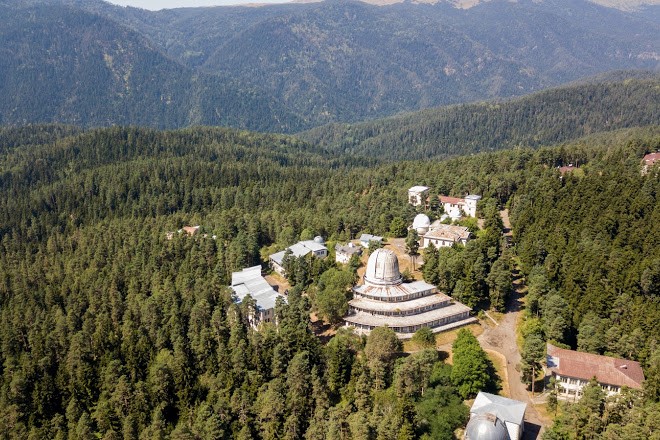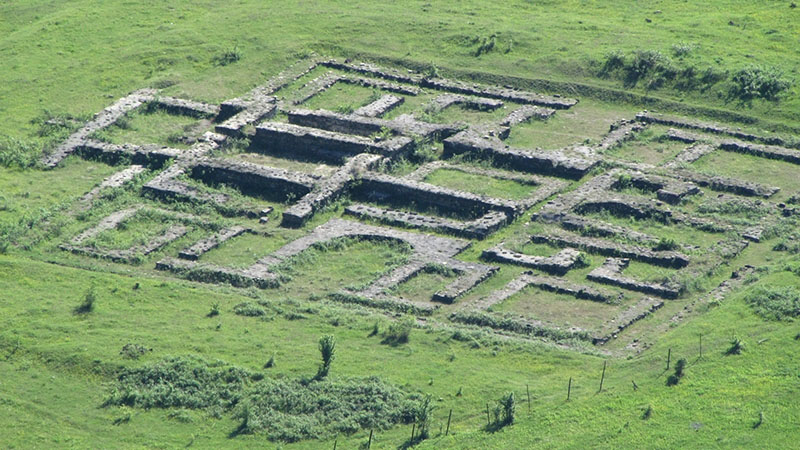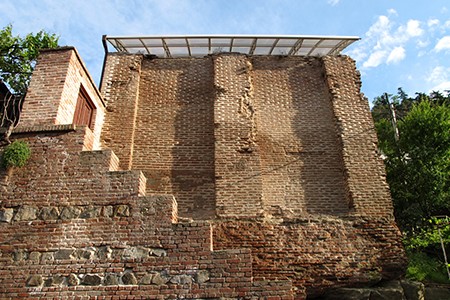 |
Official Webpage |



ARM ENG |
|||||
|
|||||||
In ancient times astronomy in Georgia served as a tool for keeping track of time, seasons, establishing calendars, like in other parts of the world. The Georgian National Center of Manuscripts stores rare manuscripts starting from VII century. In XI - XIII centuries the observatories had been established in Kutaisi and Tbilisi where astrolabes had been used for observation of celestial bodies. At present astronomy in Georgia is generally represented in Abastumani Astrophysical Observatory (AAO) which is one of the leading scientific institutes in Georgia.



Astronomy in Georgia is generally represented in Abastumani Astrophysical Observatory found in 1932. It is one of the leading scientific institutes in the country. Several telescopes are operational today, as well as the instruments for atmospheric studies. In 2007 the Observatory was integrated with Ilia State University, merging scientific research and education which facilitated the growth of a new generation of researchers. There are groups of astronomers and astrophysicists in other Georgian universities and institutions as well. Georgian scientists collaborate with research centers and universities worldwide. Research groups participate in various international scientific projects. The interest in astronomy in Georgia has been growing, which increases future perspectives of its development in the country.

The Kanobili mountain that hosts this observatory is covered with coniferous forest and is 1650-1700 m. above sea level. The average number of clear nights are 150 per year.
The Nekresi fire temple is an archaeological complex in the eastern Georgian region of Kakheti. The excavated building, preserved only fragmentarily at a foundation level, is identified as a Zoroastrian fire temple, sun temple, or a Manichean shrine.

Archaeological artifacts found at the site are limited to fragments of pottery of the 2nd to the 4th centuries; charcoal from a threshold gave a radiocarbon date in the 5th century suggesting that the site was destroyed at that time.
Uplistsikhe is as fascinating to visit as it is difficult to pronounce. The ancient cave city may be as old as 3,000 years, and it long served as one of the major religious centers of pre-Christian Georgia.


The spacious temple consists of many rooms and chambers. In addition to areas carved out of the stone, additional walls were also added. While we know very little about what the rituals here were like, this was likely a place of worship for the Caucasian Sun goddess.
The Atashgah, is an ancient Zoroastrian temple in Tbilisi, Georgia. It was built when Georgia was a part of Persian Empire in Sasanian era (224-651 AD). The name “Ateshga” originates from the Persian “Ateshgah” which means the place for fire. It is described as the northern most Zoroastrian fire-temple in the world.

Atashgah is located around 100 meters east of the Holy Mother of God Church of Bethlehem, on the Old Town slopes northeast of the Mother Georgia statue. It is an ancient brick building with a protective curved perspex roof. The temple is one of the oldest religious buildings in the Georgia’s capital located in the historic part of the city.
